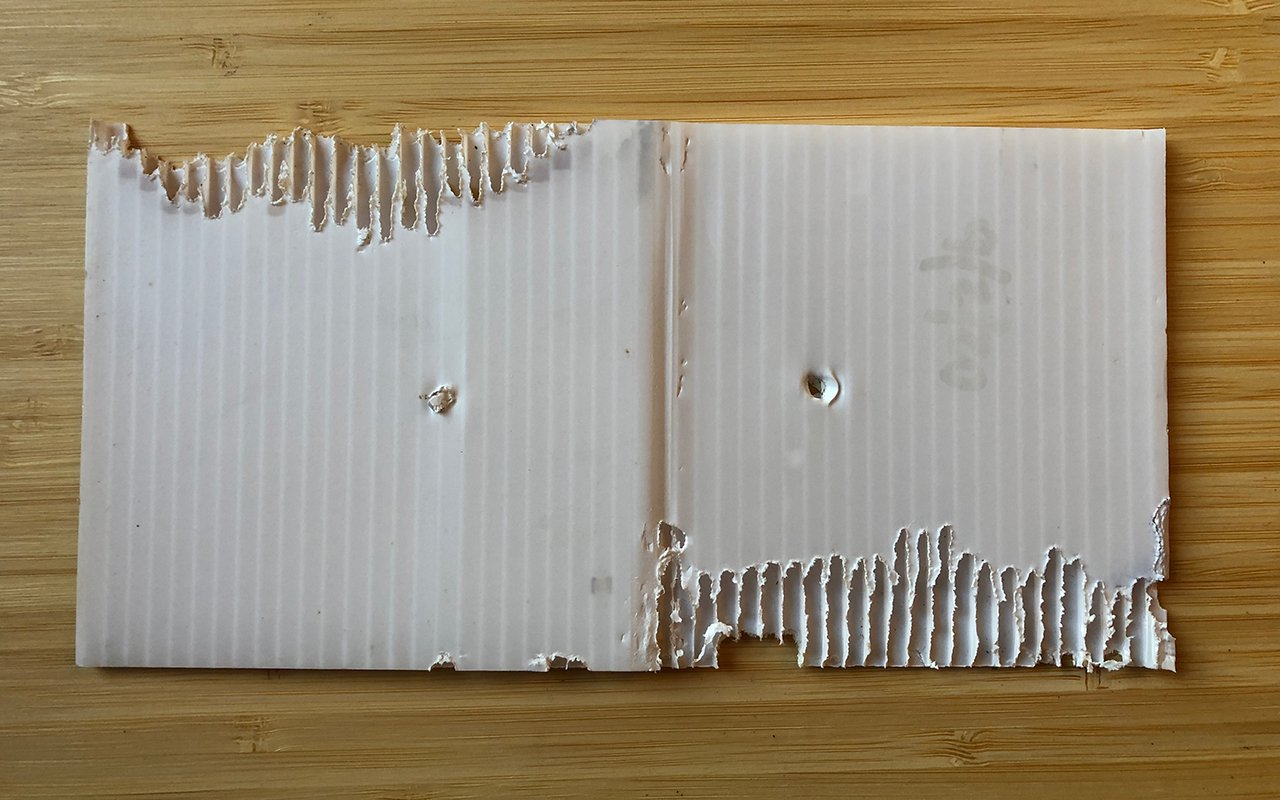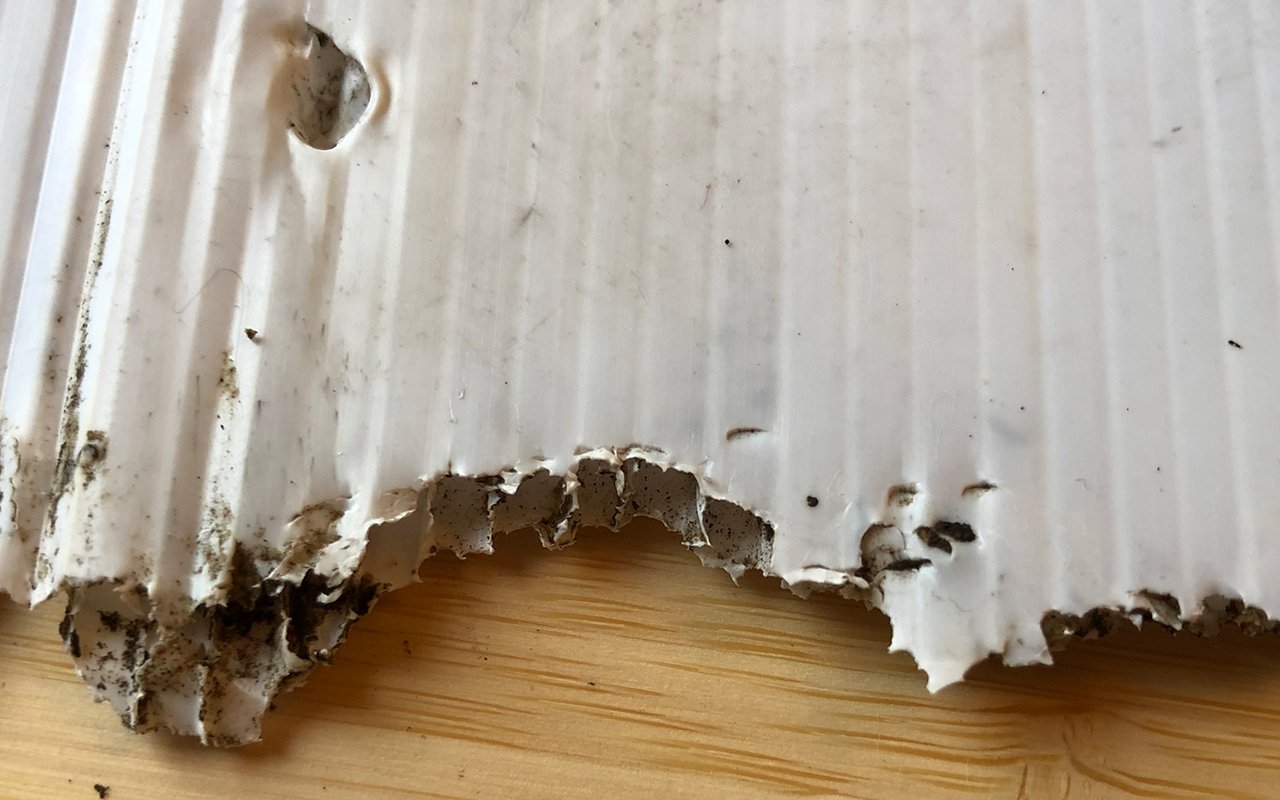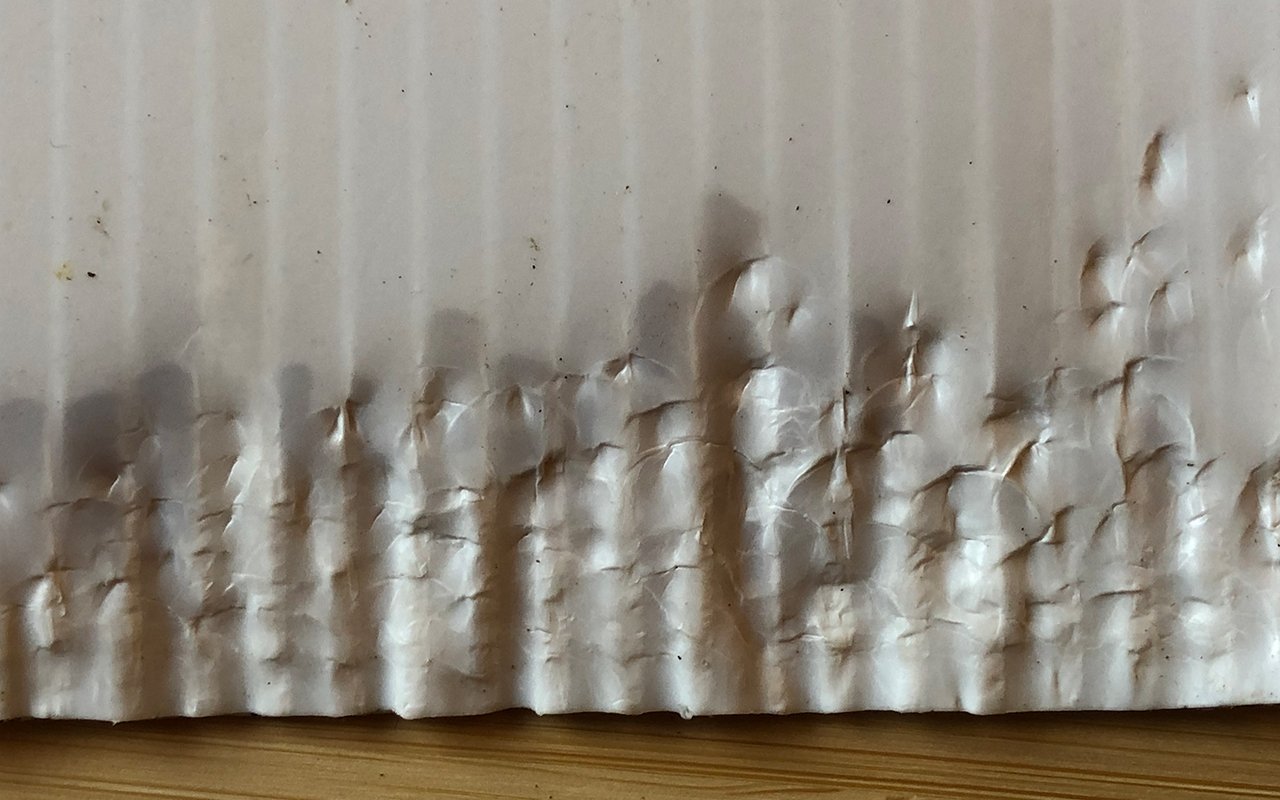How to use chew cards
Chew cards are a safe and easy way to find out what predators are visiting your backyard.
The cards are filled with a non-toxic hypoallergenic lure that predators nibble on. Each leaves a unique bite mark, meaning you can figure out what kind of trap is required to protect native wildlife in your backyard (and where to put it).
Chew card ingredients
Chew cards are filled with lure made from: hypoallergenic synthetic peanut flavour, icing sugar, flour, oil and blue dye.
Installing your cards
Find the best place to put the cards. Try near rubbish and compost bins, along fence lines or hedges, and at the base of trees. Space cards at opposite ends of your property to increase likelihood of detecting pests. If you have a large property, you can nail up cards every 10 - 20 metres.
Fold each card in half and nail it to a tree, fence or post. It should be about 20 - 30cm from the ground and the top flap should stick out at a 45-degree angle. Date and number the card so you know how long it has been out for.
Leave your cards out for 5 - 7 dry nights then check for bites. If nothing has nibbled your cards, leave them out for a maximum of 2 weeks then throw them away.
Tip! Check the weather forecast. Ideally, put your cards out when there are 5 to 7 clear nights in a row. Predators are less likely to be out looking for food if it’s raining.
Whose chews?
Now it’s time for some detective work to figure out what chewed your card. When a predator bites your card it leaves a unique bite or tooth mark impression.
Mouse
Mice leave small areas of chewed card, nibbling the hollow parts on one side. Look for teeth marks or punctures that are less than 1.5 mm wide.
Rat
Rats use their incisor teeth to chew through the edges leaving ragged edges with random patterns. Look for blunt teeth marks that are about 2 mm wide.
Possum
Possums leave crushed margins that can sometimes look like water damage. They can also leave moustache shaped teeth marks that are 5 - 7 mm wide.
Extra resources
Bite marks guide - Pest Detective website.
Chew card guides and bite mark interpretation - Manaaki Whenua








